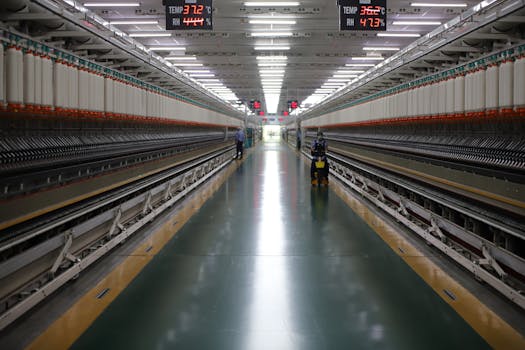
Fiber Futures: Innovations and Trends in Africa’s Textile Industry
Fiber Futures: Innovations and Trends in Africa’s Textile Industry. The African textile industry is a significant sector, providing employment and contributing to the continent’s economic growth. With the increasing demand for sustainable and high-quality textiles, the industry is experiencing a surge in innovations and trends, driven by advancements in fiber technology and changing consumer demands.
Africa’s textile industry has a long history, dating back to ancient times when traditional fabrics such as cotton, wool, and silk were produced. However, the industry has undergone significant transformations over the years, driven by technological advancements, trade agreements, and shifting consumer preferences. Today, the industry is characterized by a mix of traditional and modern production methods, with a growing focus on sustainability and innovation.
Section 1: Current State of the Textile Industry in Africa
The textile industry in Africa is a diverse and complex sector, with different countries having their unique strengths and weaknesses. Some of the major textile-producing countries in Africa include Egypt, South Africa, Nigeria, and Ethiopia. These countries have well-established textile industries, with a strong focus on cotton production, spinning, weaving, and knitting.
Despite the challenges faced by the industry, such as high production costs, limited access to financing, and competition from cheap imports, African textile manufacturers have been working to improve their competitiveness and expand their markets. This has involved investing in new technologies, improving product quality, and developing new products that meet the changing needs of consumers.
Section 2: Innovations in Fiber Technology
One of the key drivers of innovation in the African textile industry is advancements in fiber technology. New fiber developments, such as sustainable cotton, recycled polyester, and plant-based fabrics, are changing the way textiles are produced and consumed. These new fibers offer improved sustainability, durability, and performance, making them attractive to consumers and manufacturers alike.
For example, sustainable cotton production is becoming increasingly popular in Africa, with many farmers adopting conservation agriculture practices that reduce soil erosion, improve water quality, and promote biodiversity. This not only benefits the environment but also improves the livelihoods of farmers and their communities.
Another area of innovation is in the development of new textile production technologies, such as 3D printing, digital printing, and nanotechnology. These technologies enable the creation of complex textile structures, improved fabric properties, and reduced production costs. They also offer new opportunities for African textile manufacturers to develop innovative products that meet the needs of local and international markets.
Section 3: Trends in the African Textile Industry
Several trends are shaping the future of the African textile industry, including the growing demand for sustainable and eco-friendly textiles, the increasing importance of e-commerce and digital marketing, and the need for greater diversity and inclusivity in the industry.
The demand for sustainable textiles is driven by consumer concerns about the environmental and social impact of textile production. African textile manufacturers are responding to this trend by investing in sustainable production methods, such as using renewable energy, reducing water consumption, and implementing recycling programs.
The rise of e-commerce and digital marketing is also transforming the African textile industry, enabling manufacturers to reach new markets and connect with consumers directly. This has created new opportunities for small and medium-sized enterprises (SMEs) to compete with larger companies and access international markets.
Section 4: Opportunities and Challenges
Despite the many opportunities and innovations in the African textile industry, there are also significant challenges that need to be addressed. These include the need for greater investment in infrastructure, technology, and skills development, as well as the need to address trade barriers and regulatory frameworks that hinder the growth of the industry.
African governments and international organizations are working to address these challenges, through initiatives such as the African Continental Free Trade Area (AfCFTA) and the African Union’s textile and apparel strategy. These initiatives aim to promote regional trade, improve competitiveness, and attract investment to the industry.
In conclusion, the African textile industry is experiencing a surge in innovations and trends, driven by advancements in fiber technology and changing consumer demands. While there are challenges to be addressed, the industry has significant opportunities for growth and development, driven by the increasing demand for sustainable and high-quality textiles.



